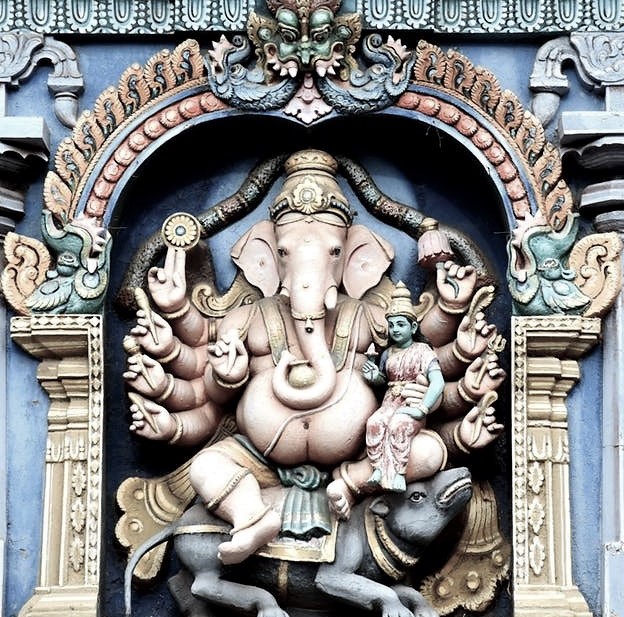- Special FeaturesFoundation Year15th centurySthala TreeTheerthamRathamArchitectureOther SpecialityThe devotees believe that the Nandi idol in front of the temple is continuously increasing its size. The locals say that the idol was initially much smaller than its present size. They say that certain experimentation was carried out on this idol and it was said that the type of rock out of which the idol is carved has a growing or enlarging nature associated with it.
- Sthala Puran
One story of the site's origin: The sage Agastya wanted to build a temple for Lord Venkateswara on this site. However, the statue that was made could not be installed as the idol's toe
nail got broken. The sage was upset over this and performed a penance for Shiva. When Shiva appeared, he said the place suits Shiva better as it resembles Kailash. Agastya then requested Shiva to give the devotees a Parvathi Goddess as Lord Uma Maheswara in a single stone, which Shiva obliged.
A second story is as follows: Chitteppa, a devotee of Shiva, was worshiping Shiva and Shiva appeared to him as a tiger. Chitteppa understood that Lord Shiva was in tiger form, and shouted Neganti Shivanu ne kanti (meaning: I saw Shiva I saw) and danced with joy. There is a cave called Chitteppa nearby. Sri Yaganti Uma Maheswara Temple is one of the few temples patronized by one of the great dynasties of India. Every year Maha Shivaratri is celebrated and a large number of devotees from all over Andhra Pradesh visit. Shiva, Parvati, and Nandi are the main deities in this temple. This temple is 14 km away from Banaganipalli in the kurnool district. The saint lord Veerabrahmendra swami stayed here for some time and wrote Kalagnanam.
- Architecture
Pushkarini
A feature of this temple is its Pushkarini, a small pond of water on the temple premises. Water flows into this Pushkarini from the bottom of the hill through the mouth of a Nandi (bull). The water is fresh and sweet, as it comes from the hills. No one knows how the water reaches the pond all year round and this temple architecture in terms of its sculpture shows the skills of ancient Viswakarma Sthapathis. Devotees find that a holy bath in Pushkarini is highly beneficial. After taking a bath in Pushkarini, they pay tributes to Lord Shiva.
The sage Agasthya bathed in Pushkarini and worshipped Shiva.
Caves present in and around yaganti temple are:
Agastya Cave
This is the cave where Agastya performed his penance for Shiva. One can enter the cave by climbing 120 steep steps. An idol to Devi is installed and may be worshipped here.
Venkateswara Cave
The damaged idol of Lord Venkateswara is present in this cave. Compared to Agastya cave it is easy to climb though the steps are steep. According to the story this idol was present in this cave before the Tirumala Venkateswara Temple was constructed. But as the idol is damaged near the foot, it could not be worshipped. Sri Sri Potuluri Veera Brahmendra Swami tells us in his Kala Gynanam that this place can stand as an alternative to Tirupati.
Veer Brahmam Cave
This is the cave where saint Sree Potuluri Veera Brahmendra swamy wrote some of his Kala Gnaanam (prophecy). The height of the cave is less and one needs to bend half over to enter it.
- Alankar of Deity
- Prayers and BenefitsSpecial Vratas and PrayersOfferings to DeityStotras and Mantras
- FestivalsMahashivratri
- Sodasha Upcharas
- Prasadhas
- Social ActivitiesAnnadhanMarriageEar BoringHead ShaveDanaasEducation FacilitiesSocial DrivesOther Activities
- Arjita Seva
- Tags

